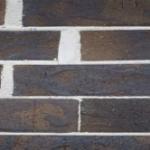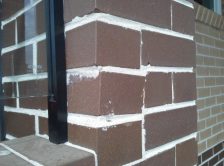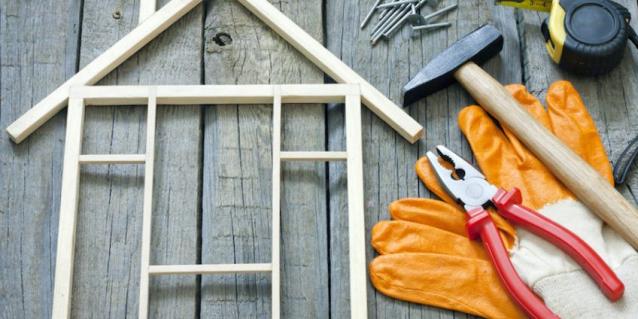
How to Gauge Acceptable Standards and Tolerances
By HOUSPECT Building and Pest Inspections|June 04, 2018
One of the biggest areas of concern when commissioning or constructing a new residential property is avoiding (and if necessary dealing with) new home building defects. Where does responsibility lie, if something is not to the standard required?
To protect home owners and builders, there are National, State and Territory Regulatory Codes and Standards that new builds must adhere to. They cover a wide range of topics from the equipment and materials used to the level of workmanship that is acceptable. The details are set out in individual legislative Acts, according to the building type.
In summary they are:
The guide clarifies industry-agreed criteria for most aspects of the home construction process, including floors, walls, framing, masonry, windows, doors, roofs, plumbing and electrical work.
The Guide to Standards and Tolerances 2017 is therefore a great source of reference when creating a building contract. It also helps agree where responsibility lies for any perceived new home building defects, meaning less possibility of a dispute on completion.
If there is a disagreement, the guide – along with relevant prescribed industry standards and legislative tolerances for construction domestic buildings – provides quantifiable and qualifiable measurements to apply.
Clearly, a building contract can’t set aims that are less than the relevant legislation demands, so the relevant regulatory documents supersede the Guide. However, it clarifies “grey” areas, acceptable levels of workmanship and liability for new home building defects.
This Guide can be used to determine whether or not an item is defective only where this cannot be done by reference to the contract documents, the relevant Australian Standards, the BCA or the relevant regulations. Where there is any contradiction or difference between the Guide and an Act, a regulation, the BCA or a building contract, all of these take precedence over the Guide.
The Guide does not replace the requirements of these other documents.
The sort of reference information in the Guide to Standards and Tolerances includes: time measurement; the standard vertical and horizontal deviations for surfaces; and how to inspect surfaces from a normal viewing position.
The guide also includes “Responsibility to Rectify”, covering acceptable margins for new home building defects.
In fact, one of the most important aspects of the Guide to Standards and Tolerances 2017 is the clarity it provides for disputes, and how far liabilities extend.
For example, the guide illustrates the requirement for:
To run smoothly, construction projects also hinge on transparent and regular communication. Careful management of expectations and open discussion can help avoid disputes and the incident of new home building defects. This also lessens the chance of costly remedial work.
To protect home owners and builders, there are National, State and Territory Regulatory Codes and Standards that new builds must adhere to. They cover a wide range of topics from the equipment and materials used to the level of workmanship that is acceptable. The details are set out in individual legislative Acts, according to the building type.
In summary they are:
- Building Code of Australia.
- Australian Standards.
- State by State Legislation.
The guide clarifies industry-agreed criteria for most aspects of the home construction process, including floors, walls, framing, masonry, windows, doors, roofs, plumbing and electrical work.
The Guide to Standards and Tolerances 2017 is therefore a great source of reference when creating a building contract. It also helps agree where responsibility lies for any perceived new home building defects, meaning less possibility of a dispute on completion.
If there is a disagreement, the guide – along with relevant prescribed industry standards and legislative tolerances for construction domestic buildings – provides quantifiable and qualifiable measurements to apply.
Clearly, a building contract can’t set aims that are less than the relevant legislation demands, so the relevant regulatory documents supersede the Guide. However, it clarifies “grey” areas, acceptable levels of workmanship and liability for new home building defects.
This Guide can be used to determine whether or not an item is defective only where this cannot be done by reference to the contract documents, the relevant Australian Standards, the BCA or the relevant regulations. Where there is any contradiction or difference between the Guide and an Act, a regulation, the BCA or a building contract, all of these take precedence over the Guide.
The Guide does not replace the requirements of these other documents.
The sort of reference information in the Guide to Standards and Tolerances includes: time measurement; the standard vertical and horizontal deviations for surfaces; and how to inspect surfaces from a normal viewing position.
The guide also includes “Responsibility to Rectify”, covering acceptable margins for new home building defects.
In fact, one of the most important aspects of the Guide to Standards and Tolerances 2017 is the clarity it provides for disputes, and how far liabilities extend.
For example, the guide illustrates the requirement for:
- A builder to replace untreated pine used for an external deck, when durable timber would have been the expected material.
- Repair to a window, if the builder damaged it while working on another part of the house.
- Gutter damage due to owner error in placing ladders against it
- Damage to a storm water drain due to tree root blockage, post-construction.
To run smoothly, construction projects also hinge on transparent and regular communication. Careful management of expectations and open discussion can help avoid disputes and the incident of new home building defects. This also lessens the chance of costly remedial work.



